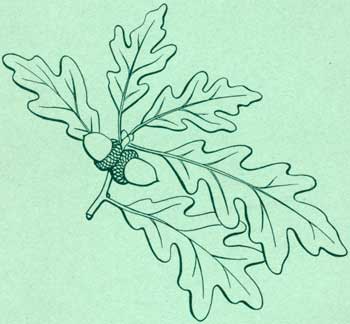|
NATIONAL PARK SERVICE Forests and Trees of the National Park System |
 |
Preservation of Natural Conditions
As previously set forth, Congress wisely prescribed that the national parks and monuments are to be administered in such manner as will leave them unimpaired for the enjoyment of future generations. Many of the laws establishing national parks contain specific provisions for the retention of their forests in a natural, undisturbed condition.
It is the intent of this legislation that interference with the normal processes of Nature within the forests of the national parks and monuments shall be limited to that necessary to provide for their use and enjoyment by the public, and to provide for the protection of the areas from fire and from devastating epidemics of insects and tree diseases. The maintenance of natural conditions precludes commercial forestry practices such as logging, pruning, thinning, and discrimination against so-called inferior species. These practices, designed to produce the most valuable crops of commercial products, are foreign to the purposes for which the national parks were set aside. Within the parks all native species have a proper place in the natural picture and may not be disturbed except for essential development or protection.
Forests are not static, but are communities of many species of living plants and the habitat of many species of animal life, from the microscopic creatures within the soil to the mighty moose and grizzlies that roam, through some of them. All of these elements combine to form a complex living community in which each species has its place and adapts itself to its environment if it is to survive. It is self-evident that all trees will die in the natural course of events.
The openings thereby created in the forest will be filled by young trees, and thus the life of the forest will be continued without interruption. Decaying trees furnish homes for many species of birds and mammals. The destruction of these habitats over wide areas may even result in the extinction of some species, as is proving to be the case with regard to the ivory-billed woodpecker.
The forests of the National Park System, maintained in their natural state and allowing the natural processes of growth and decay free play, constitute great outdoor museums in which natural relations between plants and animals may be studied. This, in fact, is one of the important functions of national park forests. In order that they may be suitable laboratories of Nature it is essential that they constitute complete biotic units.
Use of these forests for scientific studies does not prevent their enjoyment for recreational use and for inspiration and beauty. They form the setting for many of the superlative scenic attractions of the Nation.
There are those who believe it wasteful to permit large and valuable trees to die, fall down, and rot when they could have been used commercially. Such persons have in numerous instances advocated selective logging in the national parks in order to utilize the mature and overmature trees while they are still merchantable. Such logging, no matter how selective or restrictive it may be or how carefully it is accomplished, changes the complex forest community, and the area no longer exists as a natural forest.
The time is coming when there will be no more virgin forest except that preserved in the National Parks . . . then the demands for the virgin forest in the national parks will become more insistent. But it will be more important with each passing year to protect from encroachments all of the National Parks and Monuments, which comprise only about one percent of the area of the continental United States. If we lower our standards and relax our vigilance we may lose the heritage which the wisdom of our forefathers bequeathed to us.
—Editorial, American Planning and Civic Comment.


|
|
| NPS History | History & Culture | National Park Service | Contact |
|
Last Modified: Fri, Feb 9 2007 10:00:00 pm PST |


